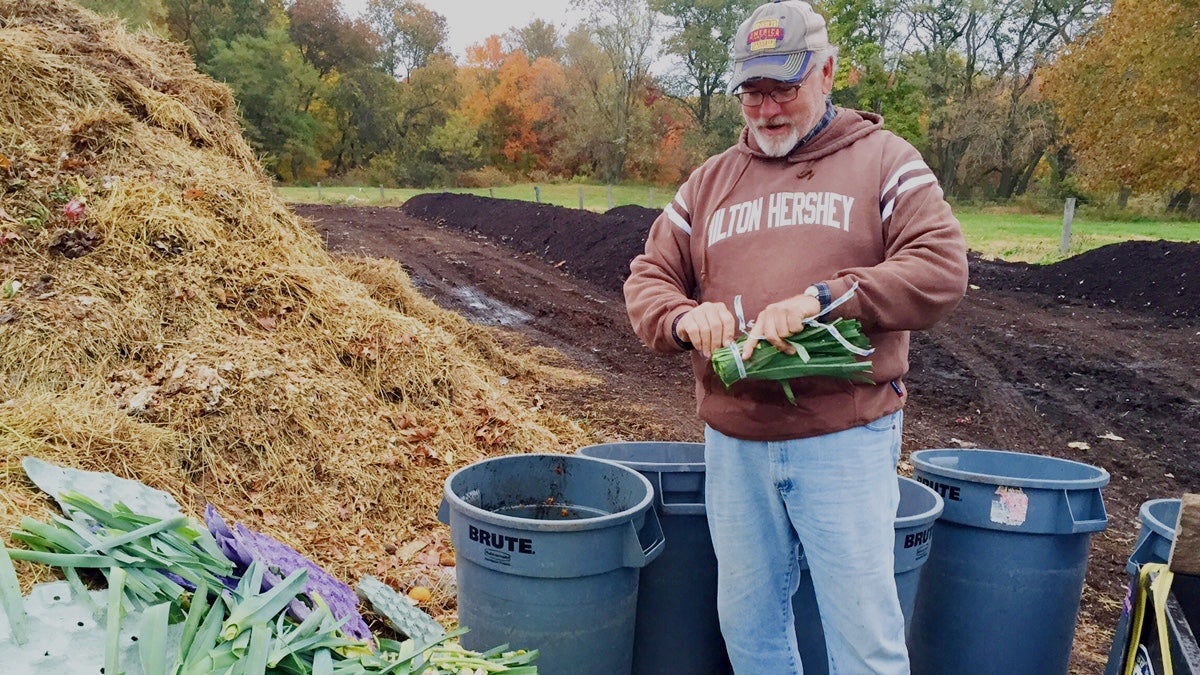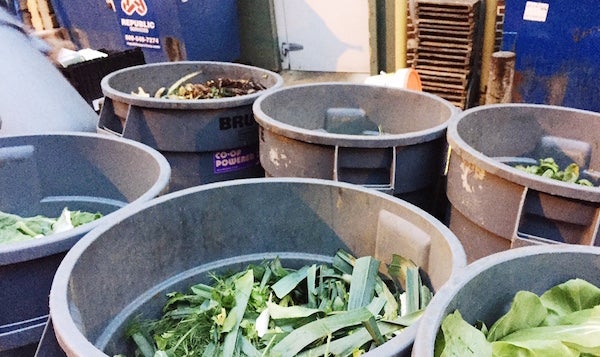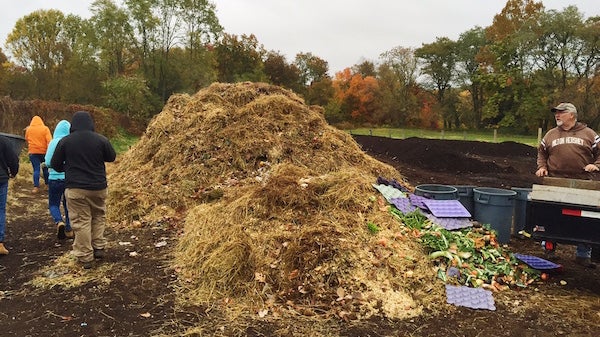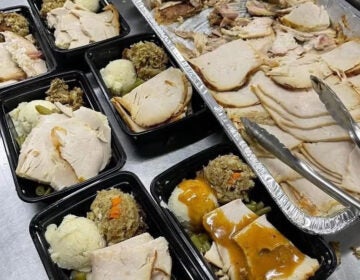‘Big pile of poop’ a key ingredient of Philly farm students’ education
Listen
Scott Blunk sorts through additions to the compost at the W.B. Saul High School farm. (Neema Roshania Patel/WHYY)
It’s just before 8 a.m. on a drizzly autumn morning at the W.B. Saul High School farm in Roxborough. Scott Blunk is already hard at work adding scraps from local co-op Weavers Way to the school’s compost piles — towering mounds that stretch about 240 feet.
Already the Philadelphia Zoo has dumped 3,000 pounds of manure, hay and leftovers.
Blunks pauses and takes a deep breath.
“In the morning you get a little stinky,” he said. “That’s zoo stuff that hasn’t been mixed in yet.”
That “zoo stuff” will be mixed in with the scraps from Weavers Way, spent grain from local breweries and coffee bean chaff — the husk that falls off beans during roasting — from coffee roasters.
Blunk said well-maintained compost won’t waft through the neighborhood, and the site was chosen with wind direction in mind.
“Very rarely will you see anything that you can imagine somebody using,” he said of what goes into the compost. Food banks and soup kitchens have first pick at the co-op’s leftovers. Occasionally, he’ll get an emergency call, like when a fridge stops working and all the produce inside is going bad.
 Scott Blunk picks up scraps from Weavers Way in Mt. Airy and Chestnut Hill three times a week. (Neema Roshania Patel/WHYY)
Scott Blunk picks up scraps from Weavers Way in Mt. Airy and Chestnut Hill three times a week. (Neema Roshania Patel/WHYY)
He added it’s a “treat” on the rare occasions he finds a bruised apple that can be transformed with the help of a pocket knife he keeps handy.
Composting at W.B. Saul, the city’s only agriculture high school, is a relatively recent undertaking. Less than five years ago, the school was paying to haul away the farm waste and buying compost made on mushroom farms in Kennett Square.
When Blunk saw this, he teamed up with Saul and local partners to take that money and start a compost program at the school. He works with the students, who check on the compost every day and help sell leftover compost for residential use. Proceeds go back to the school.
For Theresa Harter, a senior at W.B. Saul, the program has led to some unconventional high school experiences.
“Five years ago when I got to choose a high school, I didn’t really think I was going to be down here in front of a big pile of poop,” she said.
 W.B. Saul students survey the compost piles on the farm. (Neema Roshania Patel/WHYY)
W.B. Saul students survey the compost piles on the farm. (Neema Roshania Patel/WHYY)
Blunk, who is a volunteer, spends his mornings here three days a week, every week. The lot that’s being added today will sit for about seven months before it’s ready to be processed. It’s easy to see the compost at work. The recent additions are easy to identify — a pumpkin, egg cartons, heads of lettuce, coffee filters and all sorts of “odds and ends.”
Further down, the pile is smaller and darker, and it’s nearly impossible to identify what exactly makes it up.
Blunk spends a lot of his time teaching people about what exactly is compostable, and weeding out the rest. The rubber bands and twist ties that come with produce are the most common offenders.
“I always say it’s the bane of my existence,” he said, sifting through a near-complete set of silver cutlery that somehow made it into the pile.
A good compost balances all the right components, explained Tim Bennett, owner of Bennett Compost, a partner of the composting program at Saul. His company picks up scraps from houses throughout the city.
“In some ways it’s like making a cake. You want control over the ingredients,” he said. “That’s how you get a good product at the end.”
WHYY is your source for fact-based, in-depth journalism and information. As a nonprofit organization, we rely on financial support from readers like you. Please give today.




